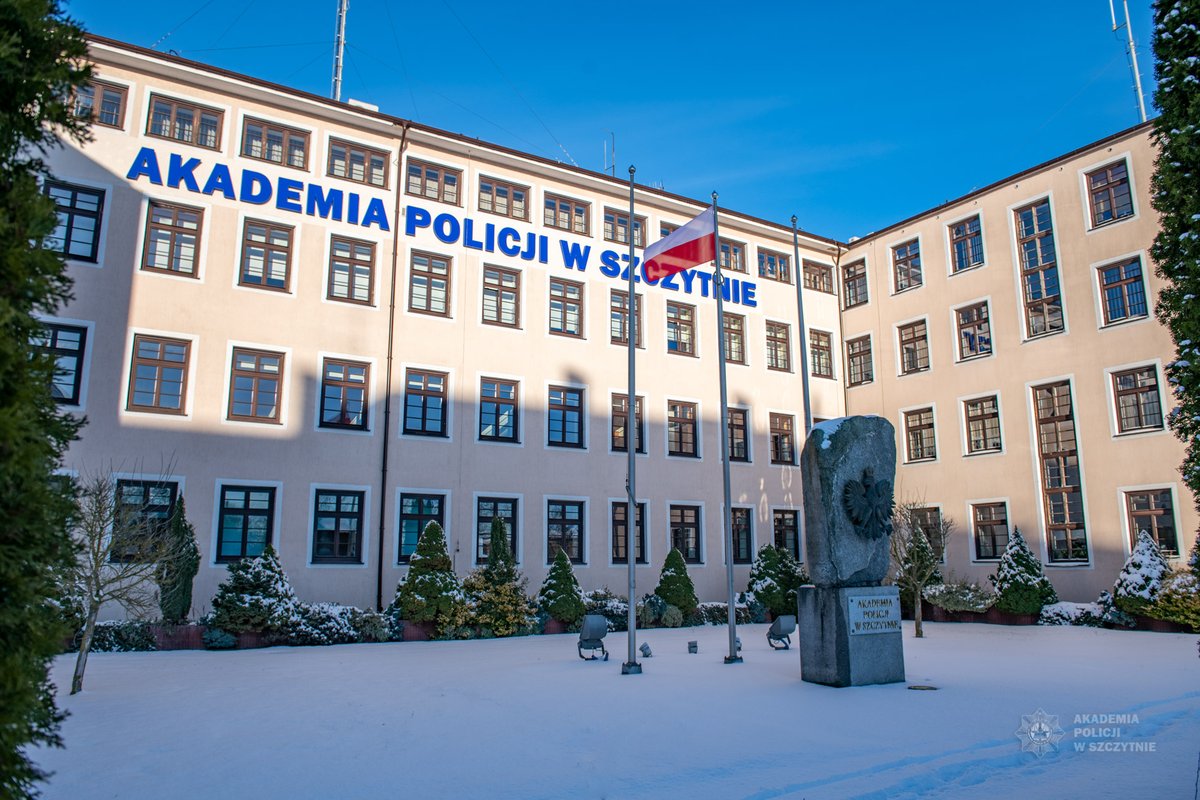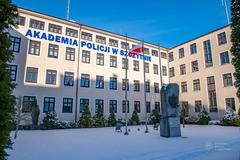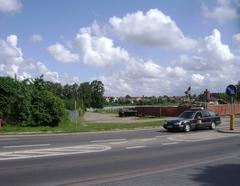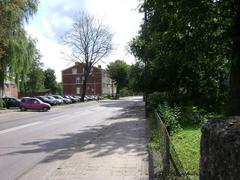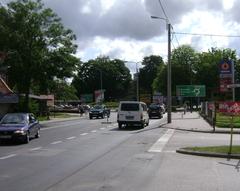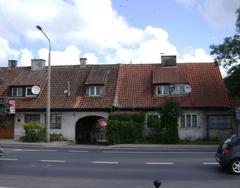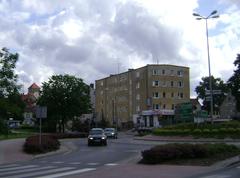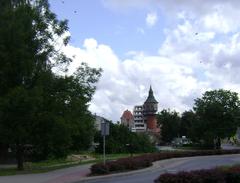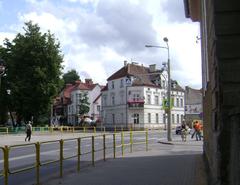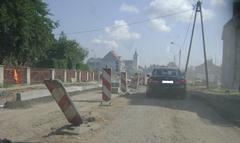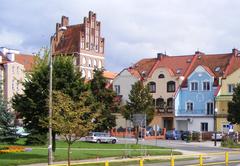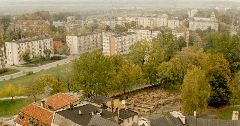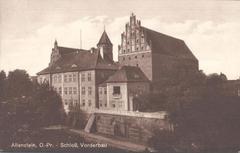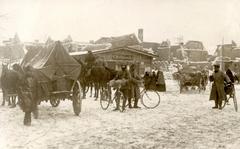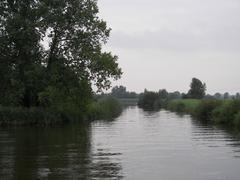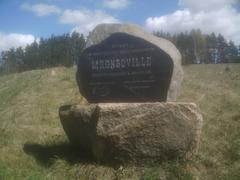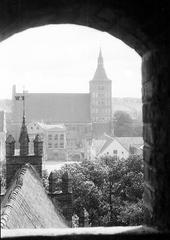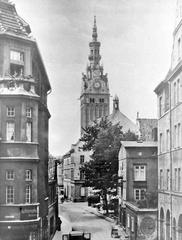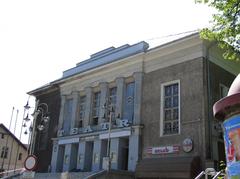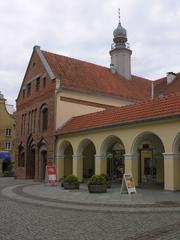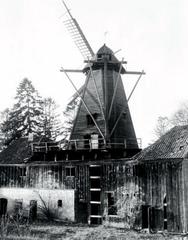Szczytno Historical Sites: Visiting Hours, Tickets, and Travel Guide
Date: 14/06/2025
Introduction
Szczytno, located in Poland’s picturesque Warmian-Masurian Voivodeship, is a captivating destination where medieval heritage meets the natural splendor of the Masurian Lake District. From its origins as an Old Prussian settlement and its strategic significance under the Teutonic Knights, Szczytno’s history is woven into the fabric of Northern Poland. This guide provides detailed, up-to-date information on visiting the region’s key historical sites, including opening hours, ticketing, accessibility, and travel tips—helping you plan a seamless and rewarding journey (Szczytno County Culture Guide; Komoot; David’s Travel Guides).
Table of Contents
- Introduction
- Szczytno’s Historical Overview
- Key Historical Sites and Visitor Information
- Outdoor Activities and Natural Attractions
- Travel Tips and Practical Information
- Accessibility and Transportation
- Dining, Accommodation, and Local Customs
- Frequently Asked Questions (FAQ)
- Visual Media and Further Resources
- Conclusion
Szczytno’s Historical Overview
Medieval Beginnings and Teutonic Influence
Szczytno’s roots extend back to the Old Prussian Skiten settlement, with archaeological traces dating to the prehistoric era (Wikipedia). The name “Szczytno” derives from the Old Prussian and Polish word for “shield,” reflecting a legacy of defense and resilience (Szczytno County Culture Guide, p. 4). In 1350, the Teutonic Knights established a wooden stronghold, soon replaced by a stone fortress, marking Szczytno as a regional power center.
Urban Growth and Prussian Era
The settlement gained minor municipal rights in 1616 and full town rights in 1723. Under Prussian rule, Szczytno saw significant urban growth, with infrastructure such as the district court, brewery, and post office flourishing by the 19th century (Szczytno County Culture Guide, p. 23). Despite Germanisation, a vibrant Polish community emerged, anchored by the Polish House (Dom Polski) and visits from cultural luminaries (Wikipedia).
Twentieth Century and Modern Identity
World Wars I and II left deep marks: Szczytno endured occupation, destruction, and postwar population shifts (Baltic Region Journal). Today, its restored historical sites, repurposed for culture and administration, reflect a renewed Polish and regional identity.
Key Historical Sites and Visitor Information
Szczytno Castle Ruins
- History: Built by the Teutonic Knights in the 14th century, the castle served as both a defensive stronghold and administrative center.
- Visiting Hours: April–October: daily 9:00 AM–6:00 PM; November–March: weekends 10:00 AM–4:00 PM.
- Tickets: Adults 15 PLN, students/seniors 10 PLN, children under 7 free.
- Guided Tours: Available (weekends and by appointment); English and Polish.
- Accessibility: Partially accessible; expect uneven terrain.
- Highlights: Explore medieval architecture and panoramic views.
(Explore Szczytno Castle Ruins)
Town Hall and Masurian Museum (Muzeum Mazurskie)
- Town Hall: Built in 1936–1937, the neo-Gothic building houses municipal offices and the Masurian Museum.
- Masurian Museum
- Visiting Hours: Tuesday–Sunday, 10:00 AM–5:00 PM (closed Monday).
- Tickets: Adults 12–15 PLN, concessions 8–10 PLN.
- Guided Tours: Available in English and Polish; advance booking recommended.
- Accessibility: Fully accessible with ramps/elevators.
- Exhibits: Regional ethnography, history, and culture.
(Plan your visit to the Masurian Museum)
Religious and Multicultural Landmarks
- Church of St. Mary the Virgin: 15th-century Gothic church, open Monday–Saturday 8:00 AM–7:00 PM.
- Evangelical Church and Jewish Cemetery: Reflect Szczytno’s multi-ethnic legacy; open to respectful visitors.
- Klasztor Mniszek Klarysek Kapucynek: Capuchin Poor Clares Monastery, gardens accessible; interior open for guided tours Wednesdays and Sundays 10:00 AM–4:00 PM.
Polish House (Dom Polski)
- Role: Cultural hub for the Polish community since 1907.
- Visiting: Check local listings for events and exhibitions.
Outdoor Activities and Natural Attractions
Lakes and Forests
- Lake Domowe Duże & Małe: Walking/cycling trails, swimming, kayaking, and fishing.
- Masurian Forests: Nature trails, birdwatching, and autumn mushroom foraging.
- Pisz Forest: Ideal for hiking and wildlife observation.
Cycling and Water Sports
- Cycling: Marked routes for all levels; rentals available.
- Boating & Cruises: Interconnected lakes ideal for kayaking and scenic boat rides.
Seasonal Activities
- Summer: Water sports, festivals, lakeside relaxation.
- Winter: Ice skating, cross-country skiing, and traditional Polish festivities.
Travel Tips and Practical Information
Best Time to Visit
Late spring to early autumn (May–September) offers the best conditions for exploring both historical sites and nature. Winters provide a quieter experience with winter sports options.
Accommodation
- Hotels/Guesthouses: Range from budget to luxury (Invest Warmia and Mazury).
- Rural “Agro” Stays: Authentic countryside experiences featuring local activities.
- Camping: Lakeside sites and outdoor stays are popular (Rough Guides).
- Booking: Reserve in advance during summer peak.
Local Transportation
- Rail: On the Olsztyn–Ełk line; check schedules.
- Bus: Regular regional services.
- Air: Olsztyn-Mazury Airport (12 km from town center); also accessible from Warsaw, Gdańsk, Bydgoszcz airports.
- Car: Well-maintained roads; free parking at most accommodations.
Accessibility
- Attractions: Most modern sites are accessible; some historic areas may have limitations.
- Tourist Info Centers: Offer multilingual support and accessibility services (ReciteMe).
Health and Safety
- Vaccinations: Routine plus Hepatitis A/B, Rabies (for outdoor activities) (HikersBay).
- Emergency: Dial 112 for police/fire/medical.
Local Customs
- Dining: Local cuisine features freshwater fish, mushrooms, and regional specialties (David’s Travel Guides).
- Tipping: 10% in restaurants; round up taxi fares (HikersBay).
- Language: Polish is official; English and German spoken in tourist areas.
Frequently Asked Questions (FAQ)
Q: What are the opening hours for Szczytno’s main attractions?
A: Castle ruins: April–October 9:00–18:00, November–March weekends 10:00–16:00; Masurian Museum: Tues–Sun 10:00–17:00; Town Hall: Mon–Fri 9:00–17:00.
Q: Are guided tours available in English?
A: Yes, at the castle ruins and Masurian Museum; advance booking recommended.
Q: Is Szczytno suitable for families?
A: Yes—museums, outdoor spaces, and lakes make it family-friendly.
Q: How accessible are the historical sites?
A: Most modern sites are accessible; some castle and monastery areas have uneven terrain.
Q: What local foods should I try?
A: Kiełbasa, Okowita miodowa warmińska (honey spirit), Warmian porter, and sękacz cake (Wikipedia: Warmian-Masurian Voivodeship).
Visual Media and Further Resources
- Explore virtual tours and photo galleries on official tourism websites.
- Use interactive maps for itinerary planning.
- Images: “Szczytno castle ruins visiting hours,” “Masurian Museum ticket info,” “Warmian-Masurian historical sites tour.”
Conclusion
Szczytno seamlessly blends historical intrigue with natural beauty, offering visitors a rich experience in the heart of the Masurian Lake District. With well-preserved sites, modern amenities, and abundant outdoor options, it’s an ideal destination for history buffs, families, and adventure seekers alike. For more details or to plan your trip, download the Audiala app, consult official websites, and follow local event updates.
Begin your journey to Szczytno and experience the captivating blend of Poland’s history, culture, and nature.
References and Further Reading
- Szczytno County Culture Guide (PDF)
- Explore Szczytno Activities on Triphobo
- David’s Travel Guides - Szczytno
- Komoot: Attractions Around Szczytno
- Baltic Region Journal, 2018
- Wikipedia: Szczytno
- Wikipedia: Warmian-Masurian Voivodeship
- Booking.com PB EasyStay
- ReciteMe Accessibility in Poland
- Rough Guides: Accommodation in Poland
- HikersBay: Szczytno Travel Info
- Invest Warmia and Mazury
- Polskabee: Masurian Lakes Castles and Churches
